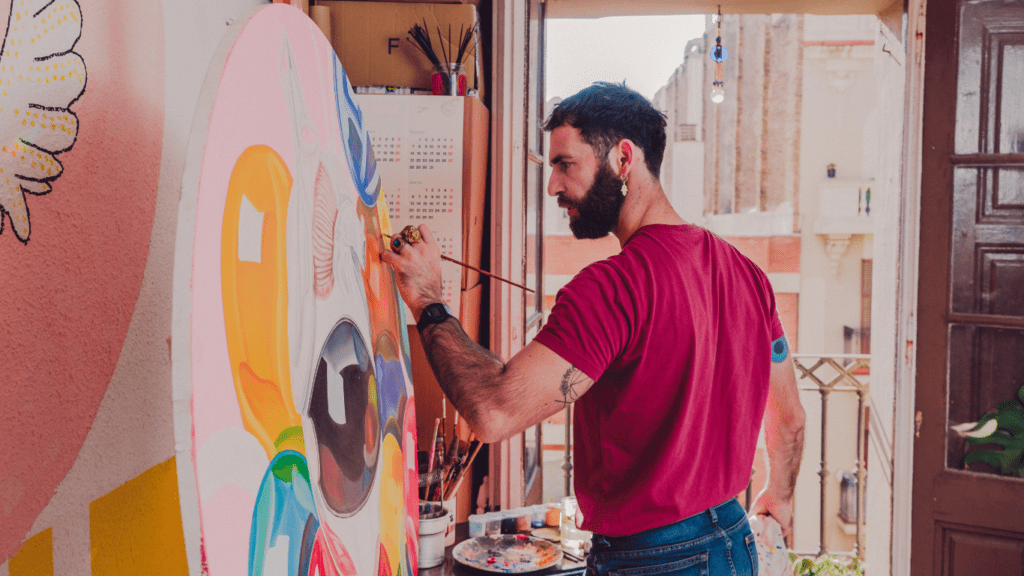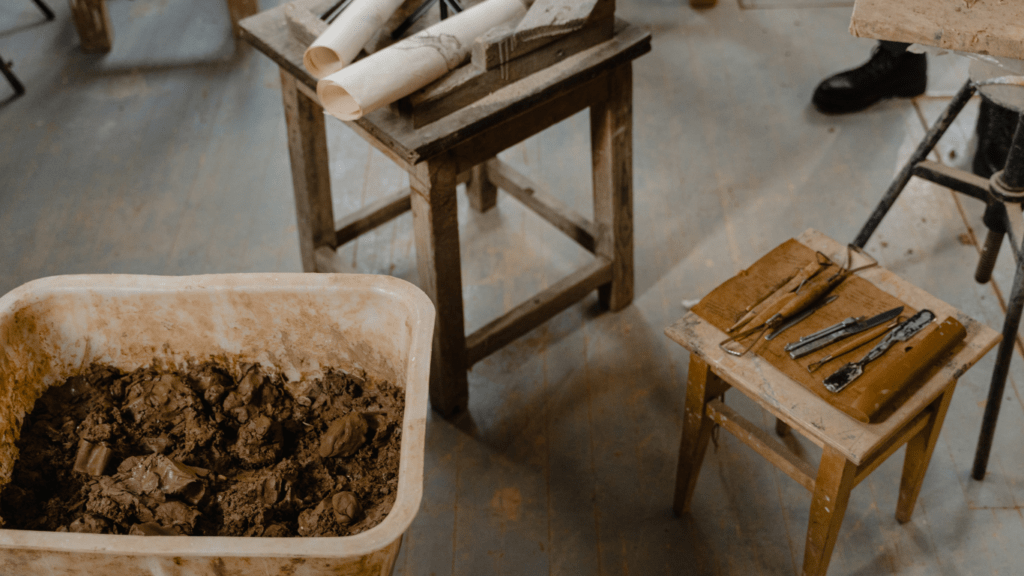As a sculptor, I’m constantly on the lookout for the latest innovations in tools and materials that can elevate my craft to new heights. The world of sculpting is evolving rapidly, with advancements that push the boundaries of creativity and precision. In this article, I’ll delve into the exciting realm of innovations in sculpting tools and materials that are revolutionizing the way artists bring their visions to life.
From cutting-edge 3D printing technologies to eco-friendly and sustainable materials, the sculpting industry is experiencing a renaissance of possibilities. As I explore these groundbreaking advancements, I’ll share insights on how these new tools and materials are reshaping the art of sculpting, offering artists like myself a myriad of exciting opportunities to experiment and create in ways never before imagined. Join me on this journey through the cutting-edge innovations that are shaping the future of sculpting.
Innovations in Sculpting Tools
Innovations in sculpting tools have been significantly influenced by new technologies and ergonomic advances, enhancing the sculpting experience for artists worldwide. I’ll delve into these advancements, shedding light on how they are transforming the sculpting industry.
New Technologies Shaping the Tools
Exploring new technologies that shape sculpting tools is essential in understanding the current landscape of the industry. Innovations such as 3D printing have revolutionized the way sculptors conceptualize and create their art. With precise detailing and the ability to bring intricate designs to life, 3D printing has become a game-changer in the sculpting world. Additionally, virtual reality (VR) tools are providing artists with immersive sculpting experiences, allowing them to visualize and manipulate their creations in a digital environment before bringing them to life physically.
Ergonomic Advances for Artists’ Comfort
Ergonomic advances play a crucial role in ensuring artists’ comfort and reducing fatigue during extended sculpting sessions. Tools and materials designed with ergonomic features, such as comfortable grips and adjustable settings, help artists maintain proper posture and minimize strain on their hands and wrists. By prioritizing ergonomics in tool design, artists can focus more on their creative process without compromising their physical well-being.
Revolutionary Materials in Sculpture
Innovations in sculpture have led to the development of revolutionary materials that are reshaping the way artists approach their craft. From eco-friendly options to durable and lightweight materials, sculptors now have a wide range of choices that not only enhance their artistic vision but also contribute to sustainability and efficiency.
- Eco-Friendly Sculpting Materials
I’m excited to discuss the emergence of eco-friendly sculpting materials that are gaining popularity among artists. These sustainable options, such as recycled plastics, organic clays, and biodegradable resins, offer sculptors the ability to create impactful art while reducing their environmental footprint. By incorporating these materials into their work, artists can align their creative process with eco-conscious practices, making a positive impact on the planet. - Durable and Lightweight New Materials
Exploring the realm of durable and lightweight materials in sculpture opens up endless possibilities for artists. Advanced composites, fiberglass, and carbon fiber are revolutionizing the sculpting industry by providing artists with materials that are not only strong and long-lasting but also easy to manipulate and transport. These innovative materials allow sculptors to push the boundaries of their creativity without compromising on the structural integrity of their artworks.
Impact on Artistic Expression

Exploring the Impact of Innovations in Sculpting Tools and Materials on Artistic Expression.
Expanding Creative Boundaries
Exploring new sculpting tools and innovative materials has widened artistic horizons significantly. Artists now have a vast array of options to experiment with, allowing them to push the boundaries of traditional sculpting techniques. This expansion in creative possibilities fosters imagination and encourages artists to explore unconventional ideas, resulting in truly unique and groundbreaking artworks.
Case Studies: Artists Embracing New Tools and Materials
Examining case studies of artists who have embraced cutting-edge tools and materials reveals the transformative impact on their work. By adopting 3D printing technologies, artists can bring intricate digital designs to life in ways previously unimaginable. Similarly, by incorporating eco-friendly materials like recycled plastics and organic clays into their practice, artists not only contribute to sustainability efforts but also infuse their creations with a new level of depth and meaning. These case studies demonstrate how embracing innovation in sculpting tools and materials can revolutionize artistic expression and pave the way for future creative endeavors.
Trends and Future Predictions
What’s Next for Sculpting Tools and Materials?
Innovations in sculpting tools and materials continue to push the boundaries of artistic creation. The future holds exciting prospects for sculptors as technology advances and new materials are developed.
Integration of Virtual Reality and Augmented Reality
The integration of virtual reality (VR) and augmented reality (AR) into sculpting processes is set to revolutionize how artists interact with their creations. These technologies offer immersive experiences, enabling sculptors to visualize and manipulate their designs in a digital environment before physically sculpting them.
Sustainable and Biodegradable Materials
The trend towards sustainability in sculpting materials is gaining momentum. Artists are increasingly turning to biodegradable and eco-friendly materials to reduce their environmental impact. From bioplastics to natural fibers, sculptors are exploring innovative options that prioritize sustainability without compromising artistic quality.
Nanotechnology in Sculpting
Nanotechnology is poised to make a significant impact on sculpting tools and materials. By incorporating nanomaterials into sculpting processes, artists can achieve greater precision, durability, and intricacy in their creations. From nanocomposites to nanoscale finishing techniques, the integration of nanotechnology offers promising avenues for sculptors to experiment and push the boundaries of their art.
Collaborative Robotics and Automation
Collaborative robotics and automation are redefining sculpting workflows by enhancing precision and efficiency. Artists can now leverage robotic tools to assist in sculpting intricate details or repetitive tasks, streamlining the creative process. This fusion of artistry and technology opens up new possibilities for sculptors to explore complex designs with ease.
Multi-Material 3D Printing
The evolution of 3D printing technology towards multi-material capabilities presents exciting opportunities for sculptors. Artists can now create intricate sculptures using a variety of materials in a single print, allowing for unprecedented flexibility and creativity. Multi-material 3D printing opens up a realm of possibilities for sculptors to experiment with texture, color, and structure in their works.
About the Author


 Harrison Lee plays a vital role at Sculpture Creation Tips, where his passion for the art of sculpture is evident in everything he does. With a comprehensive understanding of both classical and contemporary sculpting techniques, Harrison is committed to guiding and educating artists, whether they are just beginning their journey or are seasoned professionals. His approach goes beyond merely teaching technical skills; he encourages artists to explore and develop their unique artistic voices, pushing the boundaries of their creativity. Harrison's expertise and dedication make him an invaluable resource, not just for honing craftsmanship but also for inspiring innovation within the sculpting community. His ability to foster a supportive, dynamic learning environment ensures that every artist he works with is equipped to reach new heights in their artistic endeavors. Harrison's contribution to Sculpture Creation Tips is instrumental in its mission to elevate the art of sculpture and empower artists to achieve their full potential.
Harrison Lee plays a vital role at Sculpture Creation Tips, where his passion for the art of sculpture is evident in everything he does. With a comprehensive understanding of both classical and contemporary sculpting techniques, Harrison is committed to guiding and educating artists, whether they are just beginning their journey or are seasoned professionals. His approach goes beyond merely teaching technical skills; he encourages artists to explore and develop their unique artistic voices, pushing the boundaries of their creativity. Harrison's expertise and dedication make him an invaluable resource, not just for honing craftsmanship but also for inspiring innovation within the sculpting community. His ability to foster a supportive, dynamic learning environment ensures that every artist he works with is equipped to reach new heights in their artistic endeavors. Harrison's contribution to Sculpture Creation Tips is instrumental in its mission to elevate the art of sculpture and empower artists to achieve their full potential.
